Manchester International Festival steps up a gear for 2013
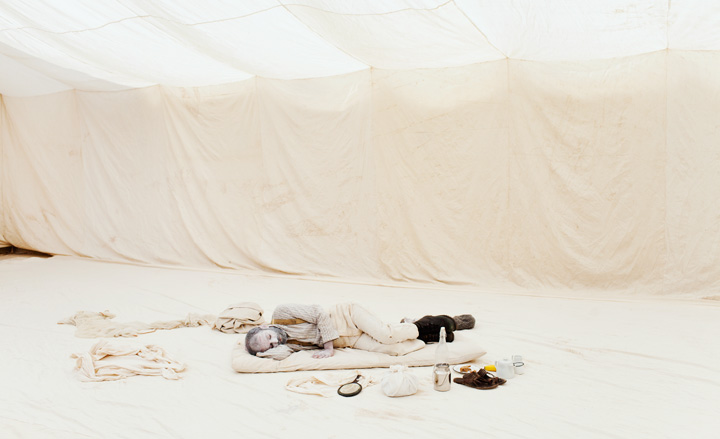
There’s much to admire about an underdog. In spite of its relative youth, Manchester International Festival has managed to carve a respectable niche for itself among heavyweights like London and Venice as a destination for art in its own right. Launched in 2007, the artist-led, commissioning festival is fueled by an unique focus on new works across the spheres of visual and performing arts. For MIF’s fourth edition, the red brick city is hosting a vast scope of exhibitions and events more ambitious than ever before.
Manchester Art Gallery leads the charge with ‘Do It 2013’, its 20th anniversary show conceived and curated by Hans Ulrich Obrist, featuring an impressive line-up of art luminaries. Much like the Fluxus art movement of the sixties, Do It centres on written artists’ instructions – ranging from farcical to profound – which lend themselves to completely new interpretations each time they are carried out.
In keeping with the festival’s premise of novelty, Obrist enlisted art director Peter Saville – responsible for the striking visual identity of the artist instructions – and sculptor Richard Wentworth, who contributed a specially designed viewing platform to breathe new life into the project. This incarnation of Do It also features a revised format, with the exhibit being divided into four volumes.
The Homage Room, for example, features instructions by deceased Do It artists, enacted specifically for MIF by living artists. Here, Tracey Emin responded to Louise Bourgeois’ command to smile at a stranger with an earnest letter of disappointment about the resulting rebuttal, penned in her characteristic scrawl. In the ‘Active’ corner of the show (instructions aimed at the public by the artists), Ai Weiwei improvises with a makeshift spray device to block a surveillance camera, while the 'Do It' cookbook includes a wicked 'Snow White White Snow' recipe from the inimitable Paul McCarthy.
Many of the Do It projects go beyond the gallery walls, spilling into the streets and appearing in the most unlikely of venues, such as Theaster Gates’ performance piece in the nearby Manchester Arndale. ‘We wanted to create a never-ending exhibition, one that would never stop. It’s like a Russian matryoshka doll,’ explained Obrist, ‘An exhibition can hide in another exhibition.’
Elsewhere in the city, Whitworth Gallery presented ‘Cotton on Coal’ – a 65-hour marathon performance by Indian artist Nikhil Chopra who is taking up residence in the empty shell of a yet-to-be-completed extension to the gallery. On the opposite side of town, an abandoned mill on River Irwell has been converted into an agricultural laboratory for the Biospheric Project.
This year also sees the introduction of Mayfield Depot as a venue. The disused railway station and parcels repository forms the backdrop for some of the festival’s most provocative events: Massive Attack and filmmaker Adam Curtis’ multi-sensory blitz (cryptically pegged as 'a collective hallucination’); and Dan Graham’s ‘Past Future Split Attention’, a time-bending live work.
Only time will tell if MIF fulfills its potential and joins the international art circuit as a mainstay. But in the meantime, this dark horse certainly ensures that it is has something to appeal to everyone.

Manchester Art Gallery is playing host to ‘Do It 2013’, featuring an impressive line-up of artists. Do It centres on written artists’ instructions – ranging from farcical to profound – which lend themselves to new interpretations each time they are carried out. 'It's OK for Lovers', by Koo Jeong-A, calls for a hole to be cut out in the shape of 'five to noon'.
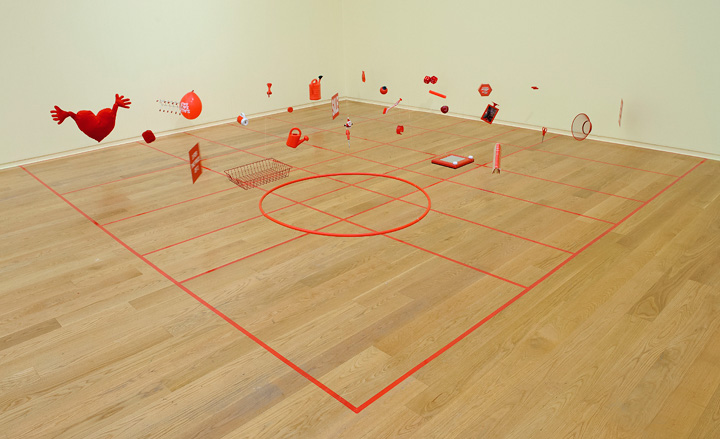
'Homage to a Red Thing', by Alison Knowles.
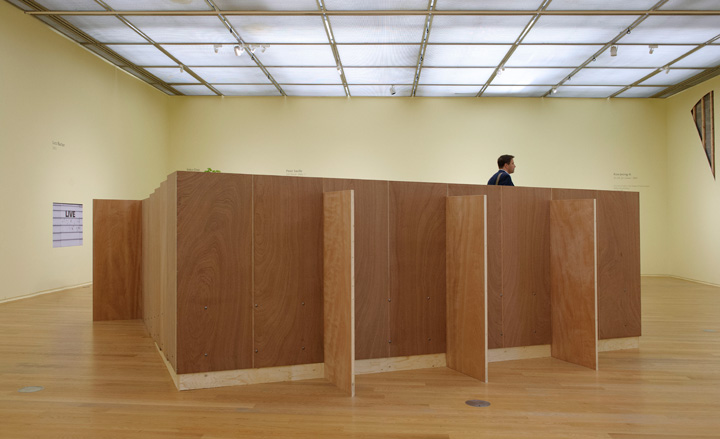
Richard Wentworth designed a viewing platform, entitled ‘It’s Not True’, for this incarnation of Do It.
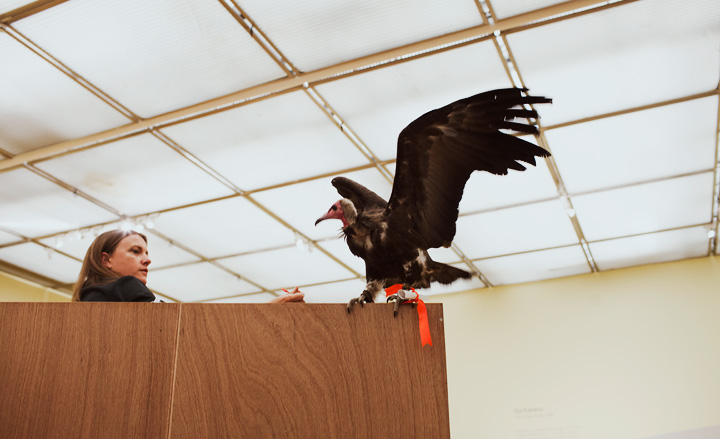
Maria José Ariona's performance in homage to María Teresa Hincapié included a live African vulture swooping around the gallery.
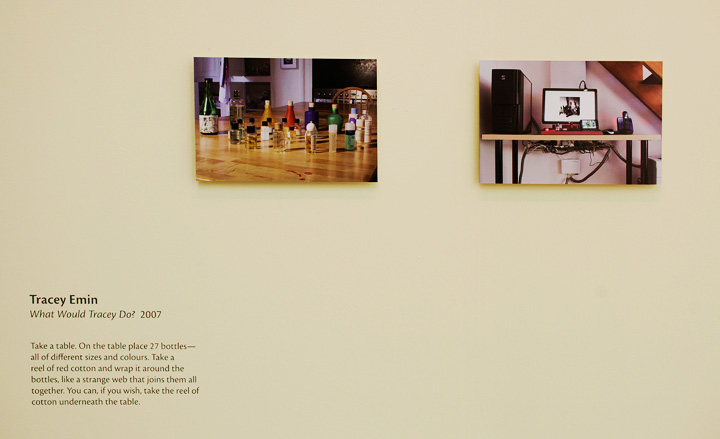
'What Would Tracey Do?', by Tracey Emin.
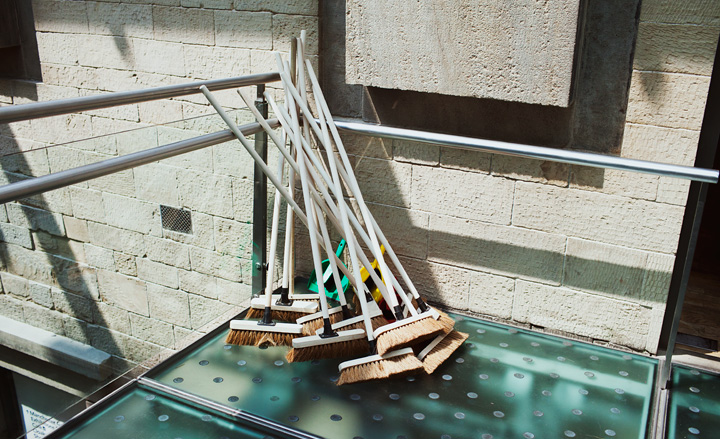
Artist instructions manifested themselves in every corner of the gallery, such as this piece by Hannah Weinberger...
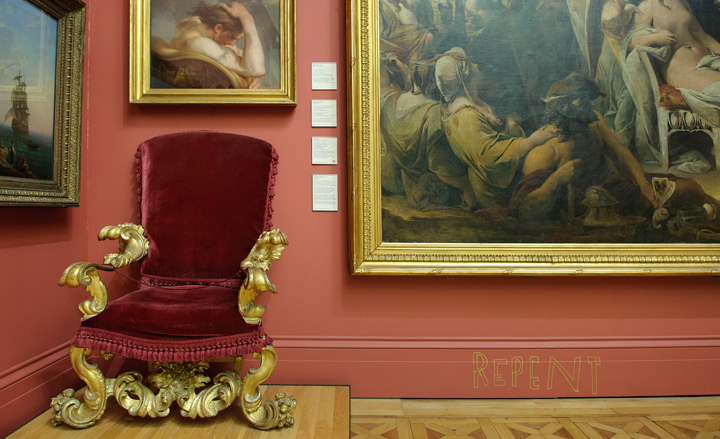
...and Ragnar Kjartansson's 'Repent', which subversively appeared amongst classical paintings.
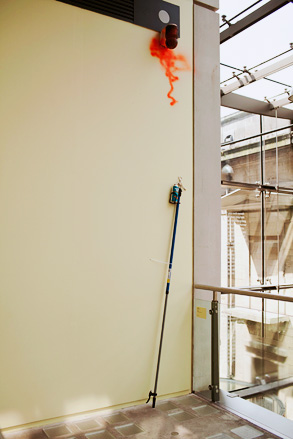
Ai Weiwei improvised a makeshift spray device to block a surveillance camera.
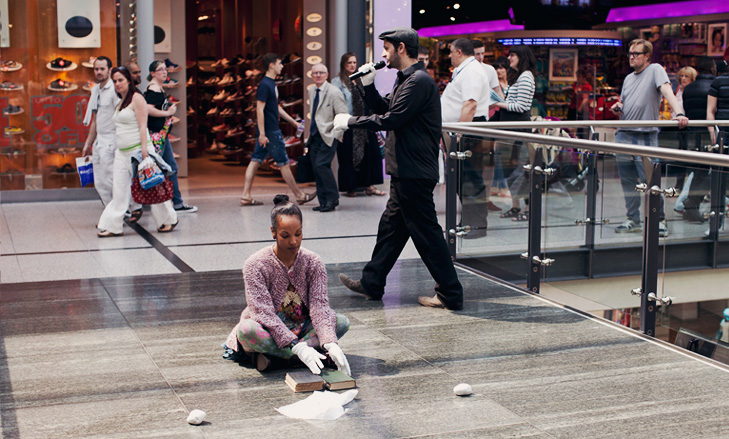
Many of the Do It projects go beyond the gallery walls, appearing in the most unlikely of venues, such as Theaster Gates’ performance piece in the nearby Manchester Arndale.
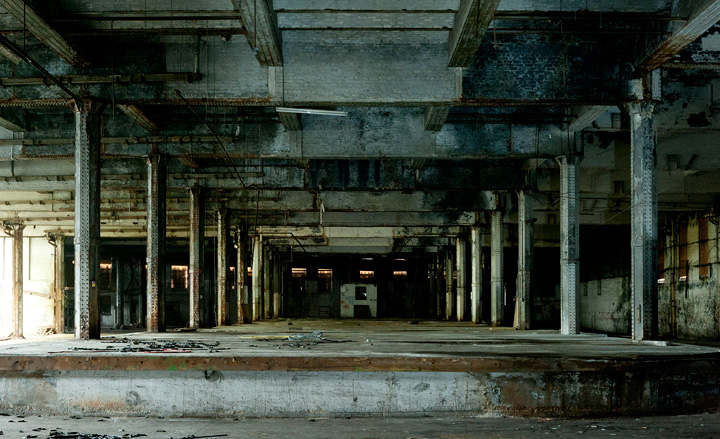
This year introduces Mayfield Depot as a new venue. The disused railway station and parcels repository forms the backdrop for some of the festival’s most provocative events.
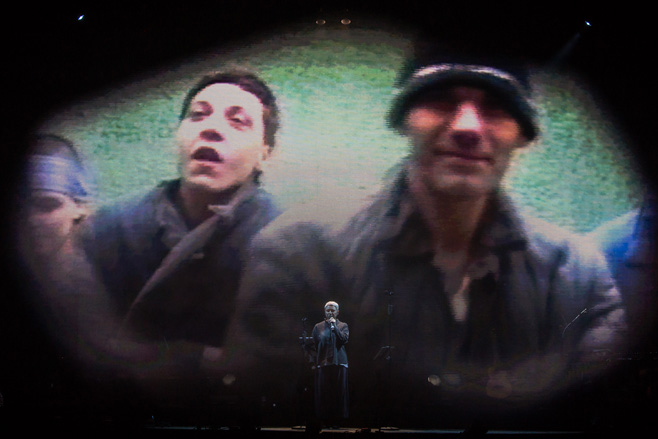
Mayfield Depot is hosting Massive Attack and filmmaker Adam Curtis’ multi-sensory blitz.
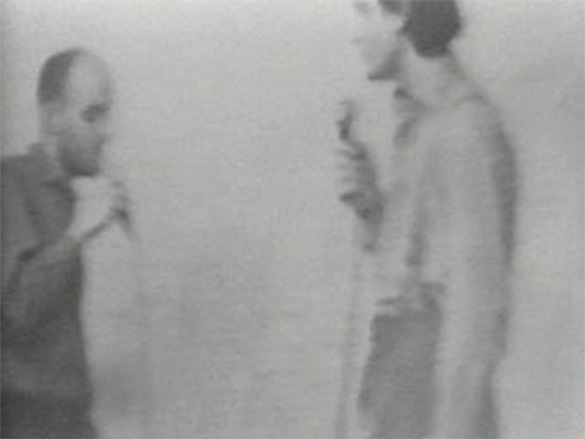
'Past Future Split Attention', by Dan Graham, also on show at Mayfield Depot
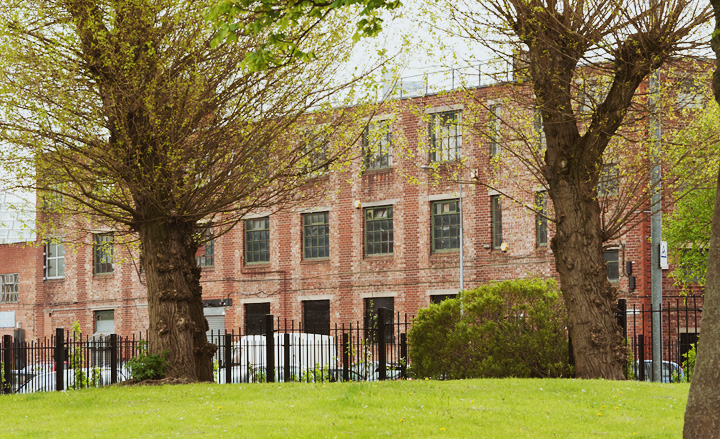
On the opposite side of town, an abandoned mill on River Irwell has been converted into an agricultural laboratory for the Biospheric Project.
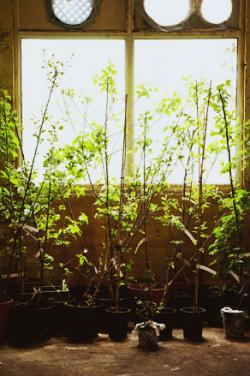
Part urban farm, part research centre, this once-derelict site is now filled with innovative sustainable food systems.
Receive our daily digest of inspiration, escapism and design stories from around the world direct to your inbox.
-
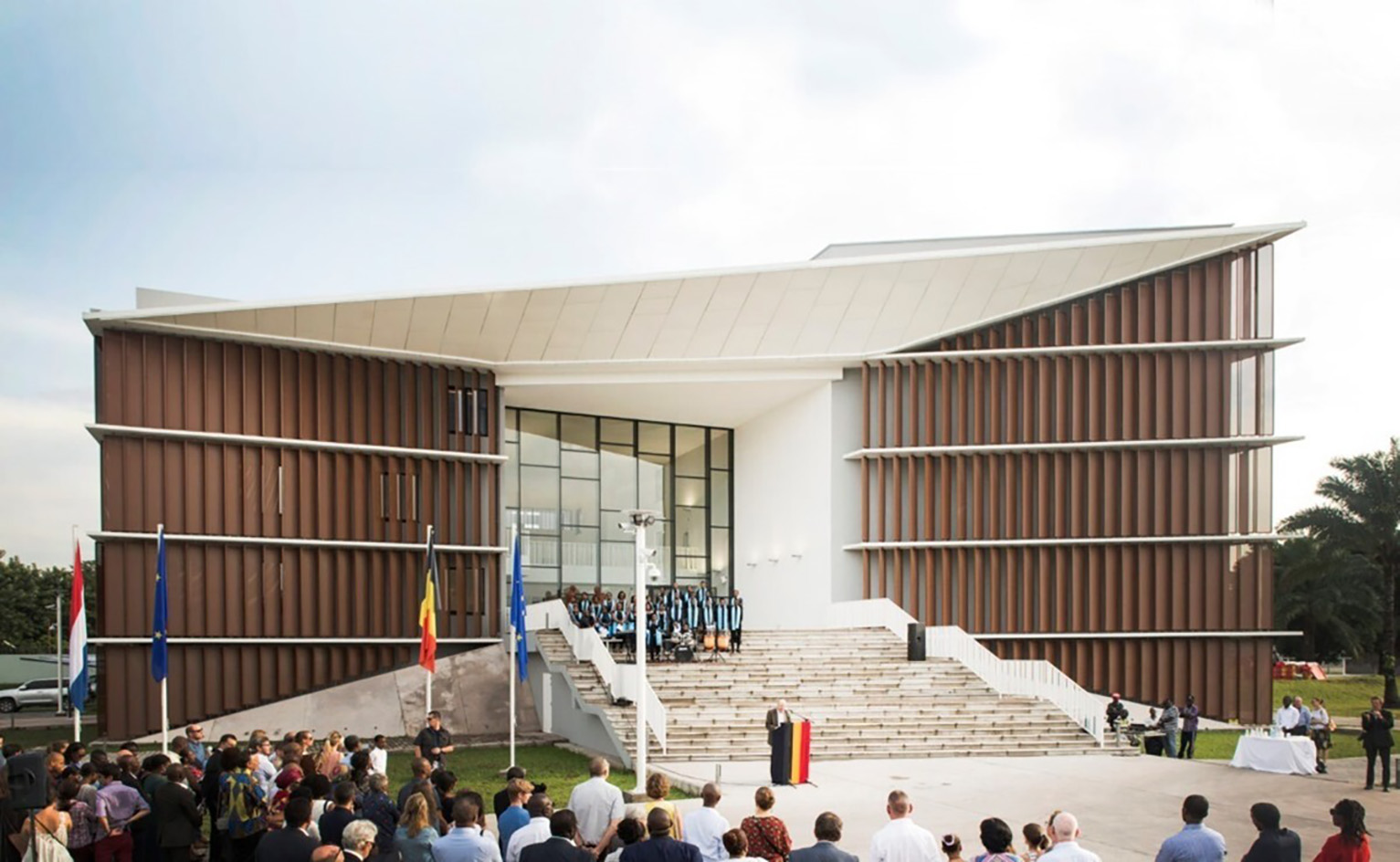 The diverse world of Belgian embassy design – 'style and class without exaggeration'
The diverse world of Belgian embassy design – 'style and class without exaggeration''Building for Belgium: Belgian Embassies in a Globalising World' offers a deep dive into the architecture representing the country across the globe – bringing context to diplomatic architecture
-
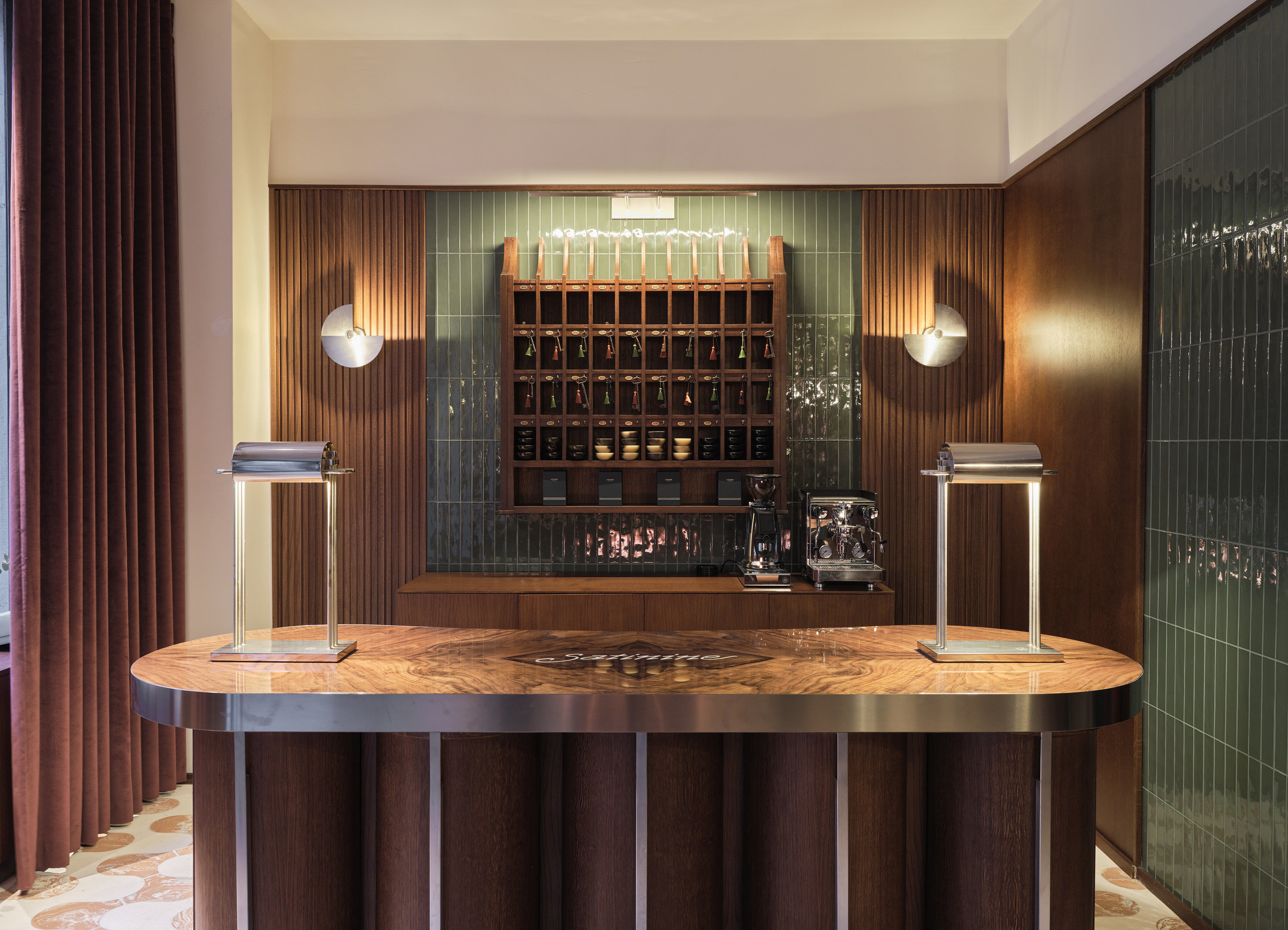 Pull up a bespoke pew at Milan’s new luxury perfumery Satinine, an homage to the city’s entryways
Pull up a bespoke pew at Milan’s new luxury perfumery Satinine, an homage to the city’s entrywaysDesigner Mara Bragagnolo fuses art deco details to bring storied Milanese fragrance brand Satinine into the 21st century
-
 Supersedia’s chairs combine sculptural forms with emotional expressions
Supersedia’s chairs combine sculptural forms with emotional expressionsItalian design studio Supersedia, founded by Markus Töll, creates furniture where ‘every detail is shaped individually'